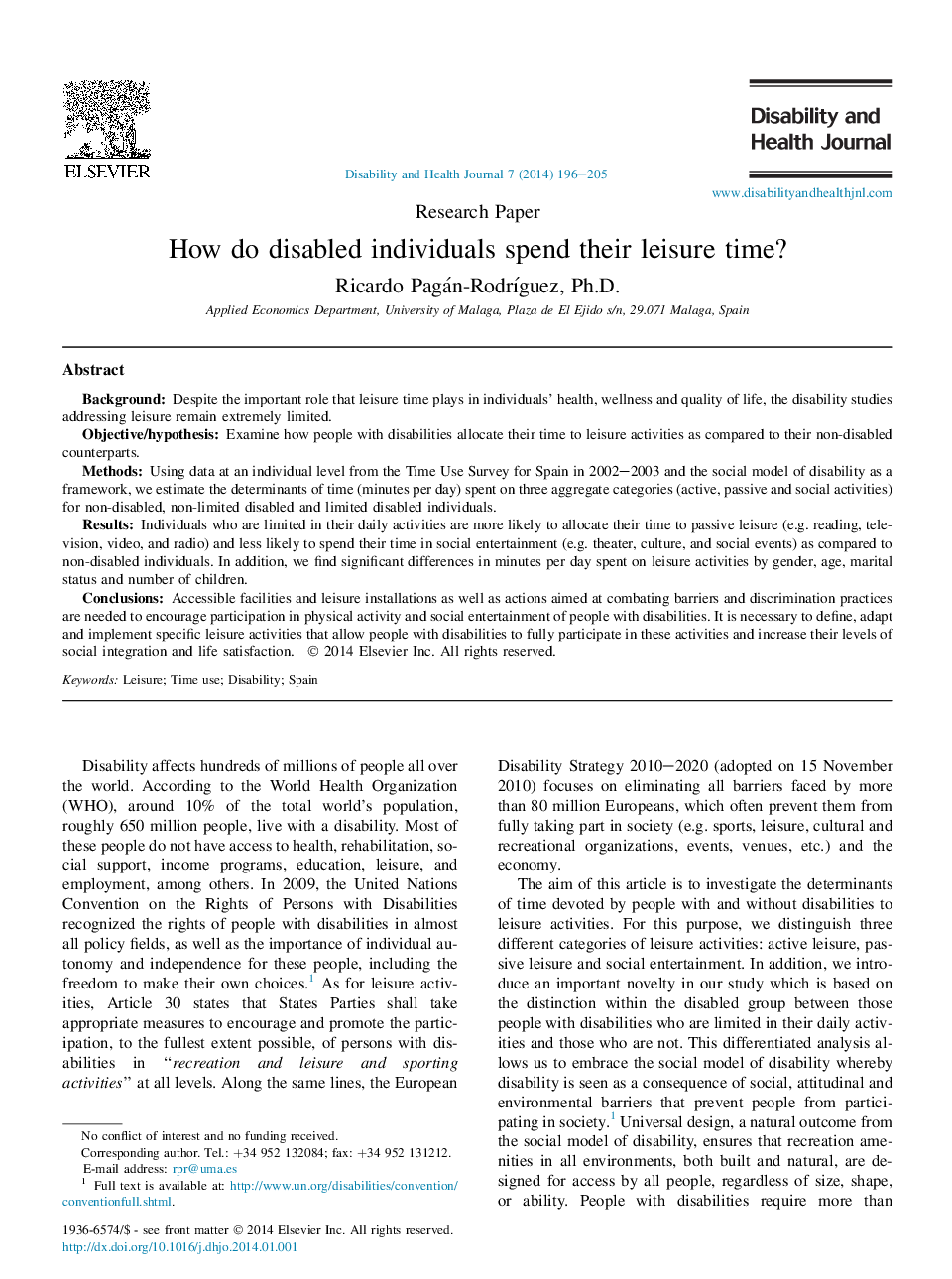| Article ID | Journal | Published Year | Pages | File Type |
|---|---|---|---|---|
| 4197232 | Disability and Health Journal | 2014 | 10 Pages |
BackgroundDespite the important role that leisure time plays in individuals' health, wellness and quality of life, the disability studies addressing leisure remain extremely limited.Objective/hypothesisExamine how people with disabilities allocate their time to leisure activities as compared to their non-disabled counterparts.MethodsUsing data at an individual level from the Time Use Survey for Spain in 2002–2003 and the social model of disability as a framework, we estimate the determinants of time (minutes per day) spent on three aggregate categories (active, passive and social activities) for non-disabled, non-limited disabled and limited disabled individuals.ResultsIndividuals who are limited in their daily activities are more likely to allocate their time to passive leisure (e.g. reading, television, video, and radio) and less likely to spend their time in social entertainment (e.g. theater, culture, and social events) as compared to non-disabled individuals. In addition, we find significant differences in minutes per day spent on leisure activities by gender, age, marital status and number of children.ConclusionsAccessible facilities and leisure installations as well as actions aimed at combating barriers and discrimination practices are needed to encourage participation in physical activity and social entertainment of people with disabilities. It is necessary to define, adapt and implement specific leisure activities that allow people with disabilities to fully participate in these activities and increase their levels of social integration and life satisfaction.
